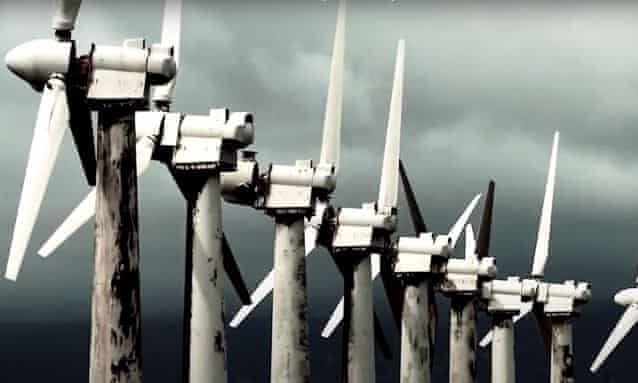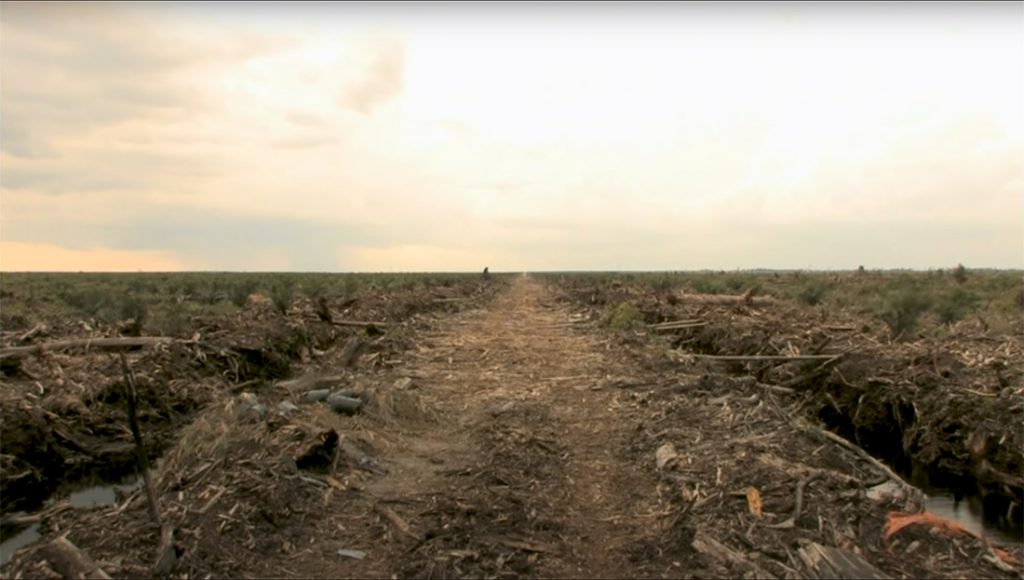(THIS ARTICLE IS MACHINE TRANSLATED by Google from Norwegian)
Stage Manager Michael Moore, known from a number of controversial TV series and films such as Bowling for Columbine (on US weapons use) and Fahrenheit 9 / 11 (about the Bush administration's war in Afghanistan and Iraq) has now released its latest film Planet of the Humans, free on YouTube. The release flips with the 50th anniversary of Earth Day April 22 – amid the corona pandemic.
The movie is directed by Jeff Gibbs, with Moore as executive producer. Gibbs is an environmentalist and a long-time partner of Moore – and a producer on, among other things Bowling for Columbine.
"Disastrous choices of the environmental movement"
Planet of the Humans According to the laundry note, the environmental movement "has lost the battle through well-intentioned but disastrous choices, such as the belief that solar panels and wind turbines will save us, by giving way to the interests of investors and companies on Wall Street." The film was shown at Traverse's film festival last year and garnered some attention in the US, with renewed criticism (including from The Guardian) now that the movie was released on YouTube.

Planet of the Humans shows examples of how green solutions are not necessarily green: wind energy requires large amounts of copper and rare minerals. solar power is criticized for its dependence on carbon and quartz for the construction of the solar panels. Both windmills og solar panels consists of components that cannot be recycled, such as the fiberglass mix used for the wind turbine blades.
"I discovered that the new technological solutions were just a new way of making money," says director Gibbs about the movie to the Associated Press (AP), and acknowledges that the movie will be "a difficult pill to swallow" for many.
Everyone wants a slice of the green cake
Gibbs has the film's low-pitched narrative voice, unlike Michael Moore who appears in front of the camera as more vicious and with more intense involvement in his own films (here we do not see him in front of the camera). Gibbs is more in line with the film's serious message and mentions a younger version of itself as a "woodcutter". At an adult age, he became an environmentally engaged citizen concerned with renewable energy. At the beginning of the film we see him participate in a "Solar festival" for the environment where everything at the festival should be powered by solar energy, but who had to resort to diesel generators to get enough power when the rain came. Finally, the festival had to connect to the regular mains.
Then it goes to battle with Barack Obama and Al Gore, about how the green energy revolution started. From public support in the US to avid banks and investors like Richard Branson who would like a piece of the green cake. In an interview clip, Branson is asked if Gore is a prophet (Prophet) – "How do you spell prophet," Branson replies, laughing. He lets the word be pronounced "profit ».
And this is also the movie about how various green organizations are funded (there is American big capital behind), that Al Gore leans on funding from the fossil fuel industry. There are many examples and hints, but superficial. And is it right to criticize any green effort solely because the funding behind is carbon black? What is the alternative?
Electric cars are charged from the mains, which is 95 percent coal-powered.
Electric cars powered by coal power
We see Gibbs participate in the launch of a new electric car from General Motors where he asks which power sources are charging the car. "The power comes from the power supplier in Lansing," say press officers at GM. "It's probably a bit of coal… I think they use natural gas", she continues uncertainly. Peter Lark from the Lansing Board of Water & Light says that it is not possible to charge electric cars with solar or wind power. "The cars are charged primarily at night, then it is not sunny. And at night the wind also decreases. They are charged from our power grid, which is 95 percent coal-powered ", he says.
A photovoltaic system is displayed at the power supplier. It looks impressive, but the municipal representative admits that it does not supply electricity to more than 10 households. A common thread in the film is how one would like, but not get, 100 percent green solutions – or that the solutions have too little effect with today's technology. And in the wake of subsidized green plants, we have now gained enormous solar cemeteries with broken panels, mirrors and bare desert areas as well as wind turbine cemeteries that stand still in the wind because they are a nightmare to remove and recycle.

Is it environmentally friendly to cut down fresh forest?
Gibbs tells the Associated Press how he tried for years to get environmental organizations to support the film financially, but was rejected – before contacting Moore. Gibbs and Moore hope the film will inspire people to think differently and find new solutions, even though the message is disheartening. I am not sure if they will succeed.
Gibbs tries to reach out to all conceivable forms of green energy, their financing and how good / bad the solutions are. The film had benefited from sticking to a couple of themes, such as biomass, and delved deeper into this. It is nothing new that electric cars must be charged with "dirty electricity" or have components made in an environmentally hostile manner. On the other hand, it was new to me that some biomass factories use scrapped car tires to get enough heat in production, with the emissions it entails.
Several biomass plants are needed to replace one coal-fired power plant. This means that you have to seize large land areas and cut down forests. Is it really more environmentally friendly to cut down fresh forest to make biofuels? And what about wood chips production? Not only is the remnants of the forest industry used (which is intended), but fresh forest is also cut down. What proportion of production consists of fresh forest? It is not answered, and is one of the many questions I ask myself after watching the movie.

An impossible task
It is simply an impossible task to look at all imaginable energy solutions and to go into the depths of subsidies, funding, political links, as well as the environmental aspects of each of them and at the same time take care of the environmental organizations (and their funding) during the film's playing time. . Here, as an executive director, Moore should have taken hold.
There are many claims and scratches on the surface, and one example kills the next – few are asked questions or held accountable, a lot of information is hanging in the air. I would like to see someone defend the use of biomass-produced fuels (and destroyed forest areas) instead of petroleum-based fuel, or a professional go into depth about biofuels.
The film's closing sequences are about how humans expel animals from their natural habitat because we plant biofuel plantations or build new factories, all to maintain our planet-destroying standard of living.
Man is the greatest threat to the Earth, and overcrowding og overspending is also something that the film goes so far. Unfortunately without going into depth there too. The result is that you get discouraged by watching the movie. It is obvious that we cannot continue with over-consumption and population growth. But we should not be blind to green solutions, throw generous subsidies on them without any follow-up requirements and embrace them without being critical to their environmental impact. Ultimately, the film may work best as a well-intentioned, though somewhat sprawling and incomplete contribution to the green shift debate.
The movie is available for free on YouTube for 30 days. See it here (English text):
The movie is 1h40 minutes, the first version of this review was
based on the first 43 minutes. The case was updated 30.4.
Planet of the Human website


